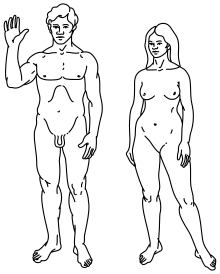Nudity in combat

The practice of entering combat without the use of clothing and armor is rare; apart from the social aspects of nudity, the combatant lacks even the basic protection of clothes, for instance when diving for cover or crawling. Also the combatant misses the practicality of hiding/carrying objects in pockets and attached to clothes.
The artistic convention of heroic nudity, however, was established in the art of ancient Greece by the Archaic period.
History
Celtic peoples
Polybius' Histories describe how the Gaesatae, hired by other Celtic peoples, the Boii and Insubres as mercenaries to fight the Romans, stood naked at the head of their army at the Battle of Telamon in 225BC.[1] Diodorus Siculus reported other instances of such combat: "Some use iron breast-plates in battle, while others fight naked, trusting only in the protection which nature gives."[2] Another possible reason for this was to avoid infection of wounds caused by contact with contaminated clothing and debris.
Livy tells of how the Tolistobogii of Galatia fought naked, being proud of their spilt blood and even widening gashes they received themselves. [3]
Julius Caesar records in his account of the Gallic War that the Gauls went into battle naked save for their weapons.
Sometimes the soldiers wore no clothing but were covered in war paint, a custom that allegedly gave the Picts their name.
Modern occurrences
In some present martial arts which are designed to be fit for military fighting, full or partial nudity still occurs. The traditional donga style of stick fighting practiced by the young warriors, now bearing firearms, of the Omo Valley Suri tribe of South Sudan and western Ethiopia, is often practiced entirely naked: serious injury is not uncommon, and it is occasionally fatal. Another example is the stick fighting style of the neighbouring Nyangatom, which fight bare-chested; the goal is to mark the adversary with visible stripes on the back.
In the Vietnam War, Vietcong sappers used to slip through the barbed wire naked or almost naked.[4]
In modern Liberia, soldiers under "General Butt Naked" Joshua Blahyi fought naked in order to terrorize their opponents.[5]
See also


Notes
- ↑ Polybius (110 BCE). "Histories, book 2, The Gauls Defeated On Their Way Home". perseus.tufts.edu. Book 2 Ch 28. Retrieved 2016-06-03. Check date values in:
|date=(help) - ↑ Stephen Allen 2001, p. 3.
- ↑ Livy, Ab Urbe Condita, Book XXXVIII, Chapter 21
- ↑ Don Winslow 2004, p. 367.
- ↑ Tony Tate 2004, p. 26.
References
- Stephen Allen (2001). Celtic Warrior: 300 BC-AD 100. Osprey Publishing. ISBN 978-1-84176-143-5.
- Peter Maslowski; Don Winslow (2004). Looking for a Hero: Staff Sergeant Joe Ronnie Hooper and the Vietnam War. U of Nebraska Press. ISBN 0-8032-3244-6.
- Tony Tate (2004). Liberia, how to Fight, how to Kill: Child Soldiers in Liberia. Human Rights Watch. GGKEY:BSU0ZLGQ89F.